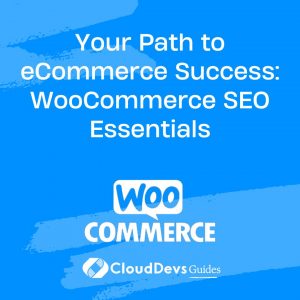Hire WooCommerce Developers Interview Questions Guide
WooCommerce, a powerful e-commerce plugin for WordPress, is widely used for building online stores. When hiring WooCommerce developers, it’s crucial to assess their proficiency in WooCommerce development, WordPress, PHP, and familiarity with e-commerce best practices. This guide will assist you in navigating the hiring process effectively, enabling you to identify candidates with the right skills for your online retail projects.
Table of Contents
1. Reasons to Hire WooCommerce Developers
Embarking on the journey to hire WooCommerce developers? Here are key reasons to consider:
1.1 E-commerce Expertise
WooCommerce developers bring specialized knowledge in setting up and customizing online stores, leveraging the extensive features of the WooCommerce plugin.
1.2 WordPress Integration
Proficiency in WordPress, the underlying platform for WooCommerce, allows developers to seamlessly integrate e-commerce functionality into WordPress websites.
1.3 Customization and Extensions
WooCommerce developers excel in customizing the appearance and functionality of online stores, integrating third-party extensions, and ensuring a smooth shopping experience.
2. How to Hire WooCommerce Developers
Follow these steps for a successful WooCommerce developer hiring process:
2.1 Job Requirements
Define specific job prerequisites, emphasizing skills in WooCommerce development, WordPress, PHP, and knowledge of e-commerce principles.
2.2 Search Channels
Utilize CloudDevs’ expertise to connect with potential WooCommerce developers. Leverage job postings, online platforms, and tech communities to discover talented individuals.
2.3 Screening
Scrutinize candidates’ WooCommerce proficiency, WordPress experience, e-commerce development skills, and understanding of online retail best practices.
2.4 Technical Assessment
Develop a comprehensive technical assessment, including coding challenges and real-world scenarios related to WooCommerce development.
3. Core Skills of WooCommerce Developers to Look For
When evaluating WooCommerce developers, focus on these core skills:
- WooCommerce Development: Proficiency in setting up and customizing WooCommerce stores, managing products, orders, and inventory.
- WordPress Integration: Knowledge of integrating WooCommerce seamlessly into WordPress websites, ensuring a unified and consistent user experience.
- PHP: Strong understanding of PHP language features, object-oriented programming, and customizing WordPress themes and plugins.
- E-commerce Principles: Understanding of e-commerce concepts, including cart management, payment gateways, and order processing.
4. Overview of the WooCommerce Developer Hiring Process
Here’s an overview of the WooCommerce developer hiring process:
4.1 Defining Job Requirements and Skillsets
Lay the foundation by outlining clear job prerequisites, specifying the skills and knowledge you’re seeking in WooCommerce developers.
4.2 Crafting Compelling Job Descriptions
Create engaging job descriptions that accurately convey the role, emphasizing WooCommerce-specific skills required.
4.3 Crafting WooCommerce Developer Interview Questions
Develop a comprehensive set of interview questions covering WooCommerce intricacies, WordPress integration, and relevant technologies.
5. Sample WooCommerce Developer Interview Questions and Answers
Explore these sample questions with detailed answers to assess candidates’ WooCommerce skills:
Q1. Explain the process of setting up a new product in WooCommerce.
A:
Setting up a new product in WooCommerce involves the following steps:
- Log in to the WordPress admin dashboard.
- Navigate to the WooCommerce section and choose “Products.”
- Click on “Add Product.”
- Fill in details such as product name, description, price, and images.
- Set product attributes, categories, and tags.
- Save the product, and it becomes available in the online store.
Q2. How can you customize the layout of the WooCommerce product page in a WordPress theme?
A:
To customize the layout of the WooCommerce product page in a WordPress theme:
- Create a custom template for the WooCommerce product page in the theme folder.
- Use WooCommerce hooks and functions to display product details, images, and other elements.
- Style the custom template with CSS to achieve the desired layout.
Q3. Write PHP code to display the total number of products in a WooCommerce store.
A:
// Sample Answer: PHP code to display the total number of products in WooCommerce
$product_count = wp_count_posts('product');
echo 'Total Products: ' . $product_count->publish;
Q4. Explain the role of shortcodes in WooCommerce.
A:
Shortcodes in WooCommerce are used to embed dynamic content and functionality into WordPress pages and posts. For example, the [woocommerce_cart] shortcode can be used to display the shopping cart on any page, allowing users to view and edit their cart without visiting the actual cart page.
Q5. How can you customize the checkout process in WooCommerce?
A:
The checkout process in WooCommerce can be customized by:
- Using hooks and filters to modify the default checkout fields.
- Adding custom fields to the checkout form for additional information.
- Implementing custom validation and processing for the checkout form.
Q6. Write JavaScript code to add a product to the cart in a WooCommerce store.
A:
// Sample Answer: JavaScript code to add a product to the cart in WooCommerce
jQuery(document).ready(function($) {
$('.add-to-cart-button').on('click', function() {
var product_id = $(this).data('product_id');
var quantity = 1; // Set the quantity as needed
var data = {
action: 'woocommerce_ajax_add_to_cart',
product_id: product_id,
quantity: quantity,
};
$.post(wc_add_to_cart_params.ajax_url, data, function(response) {
// Handle the response as needed
});
});
});
Q7. Explain the purpose of the REST API in WooCommerce.
A:
The REST API in WooCommerce allows developers to interact with the store programmatically, making it possible to create, read, update, and delete data. It enables integrations with third-party services, mobile apps, and other external systems.
Q8. How can you improve the performance of a WooCommerce store?
A:
Performance optimization in a WooCommerce store involves strategies like:
- Caching: Implementing full-page caching to reduce server load.
- Image Optimization: Compressing and optimizing images for faster loading.
- Content Delivery Network (CDN): Using a CDN to serve static assets.
Q9. Write a MySQL query to retrieve the top-selling products in a WooCommerce store.
A:
-- Sample Answer: MySQL query to retrieve top-selling products in WooCommerce SELECT p.ID, p.post_title, COUNT(w.order_item_id) as sales_count FROM wp_posts p JOIN wp_woocommerce_order_items w ON p.ID = w.order_id GROUP BY p.ID ORDER BY sales_count DESC LIMIT 10; -- Adjust the limit as needed
Q10. Explain the role of hooks in WooCommerce development.
A:
Hooks in WooCommerce are used for extending and modifying the functionality of the store. They allow developers to insert custom code at specific points in the codebase, such as before or after a product is added to the cart, enabling customization without modifying core files.
6. Hiring WooCommerce Developers through CloudDevs
Step 1: Connect with CloudDevs
Initiate a conversation with a CloudDevs consultant to discuss your project requirements, preferred skills, and expected experience.
Step 2: Discover Your Ideal Match
Within a short timeframe, CloudDevs presents you with carefully selected WooCommerce developers from their pool of pre-vetted professionals. Review their profiles and select the candidate who aligns with your project’s vision.
Step 3: Embark on a Risk-Free Trial
Engage in discussions with your chosen developer to ensure a smooth onboarding process. Once satisfied, formalize the collaboration and commence a week-long free trial.
By leveraging the expertise of CloudDevs, you can effortlessly identify and hire exceptional WooCommerce developers, ensuring your team possesses the skills required to build remarkable online retail solutions.
7. Conclusion
With these additional technical questions and insights at your disposal, you’re now well-prepared to assess WooCommerce developers comprehensively. Whether you’re setting up a new online store, customizing themes, or optimizing the performance of an existing store, securing the right WooCommerce developers for your team is pivotal to the success of your e-commerce projects.
Table of Contents






